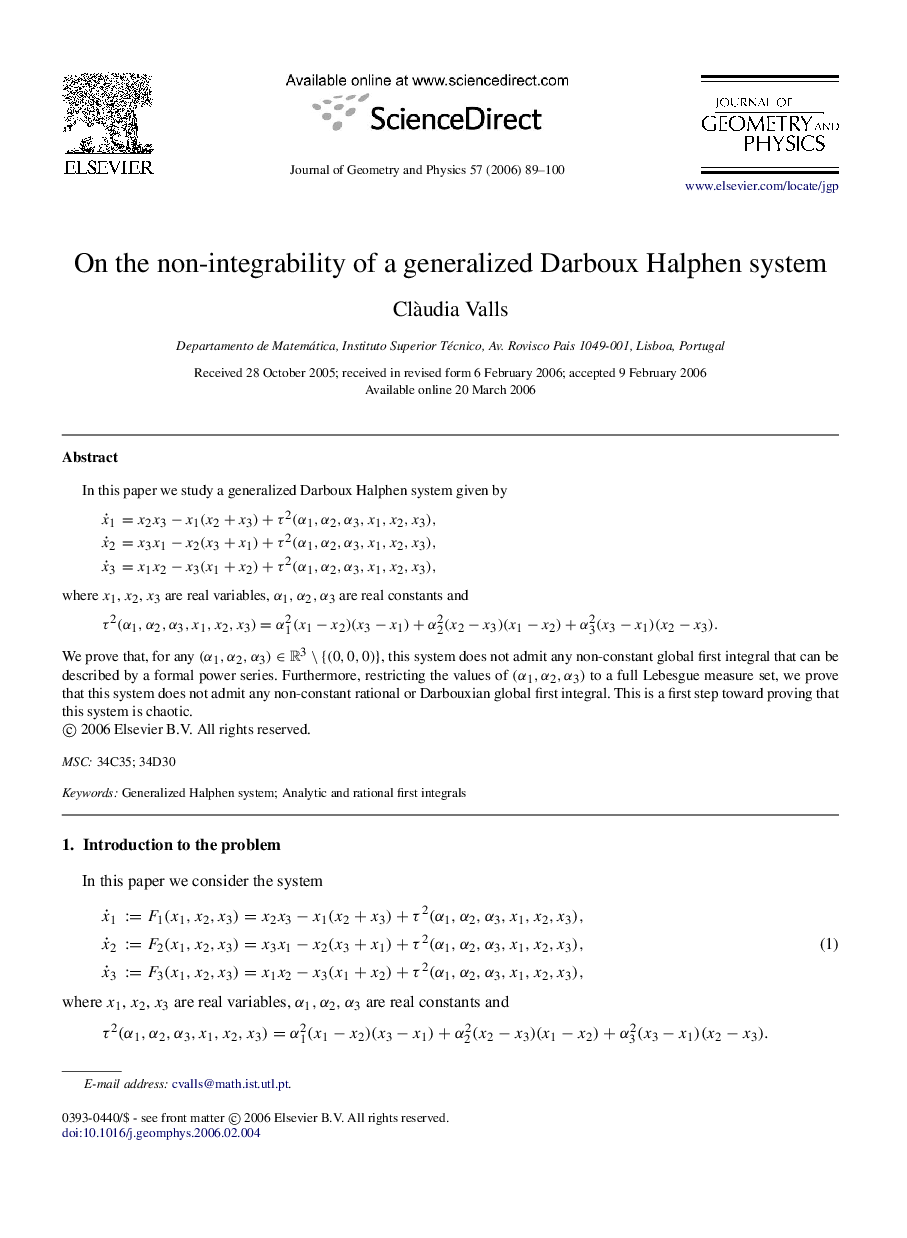| Article ID | Journal | Published Year | Pages | File Type |
|---|---|---|---|---|
| 1897005 | Journal of Geometry and Physics | 2006 | 12 Pages |
In this paper we study a generalized Darboux Halphen system given by ẋ1=x2x3−x1(x2+x3)+τ2(α1,α2,α3,x1,x2,x3),ẋ2=x3x1−x2(x3+x1)+τ2(α1,α2,α3,x1,x2,x3),ẋ3=x1x2−x3(x1+x2)+τ2(α1,α2,α3,x1,x2,x3), where x1x1, x2x2, x3x3 are real variables, α1,α2,α3α1,α2,α3 are real constants and τ2(α1,α2,α3,x1,x2,x3)=α12(x1−x2)(x3−x1)+α22(x2−x3)(x1−x2)+α32(x3−x1)(x2−x3). We prove that, for any (α1,α2,α3)∈R3∖{(0,0,0)}(α1,α2,α3)∈R3∖{(0,0,0)}, this system does not admit any non-constant global first integral that can be described by a formal power series. Furthermore, restricting the values of (α1,α2,α3)(α1,α2,α3) to a full Lebesgue measure set, we prove that this system does not admit any non-constant rational or Darbouxian global first integral. This is a first step toward proving that this system is chaotic.
